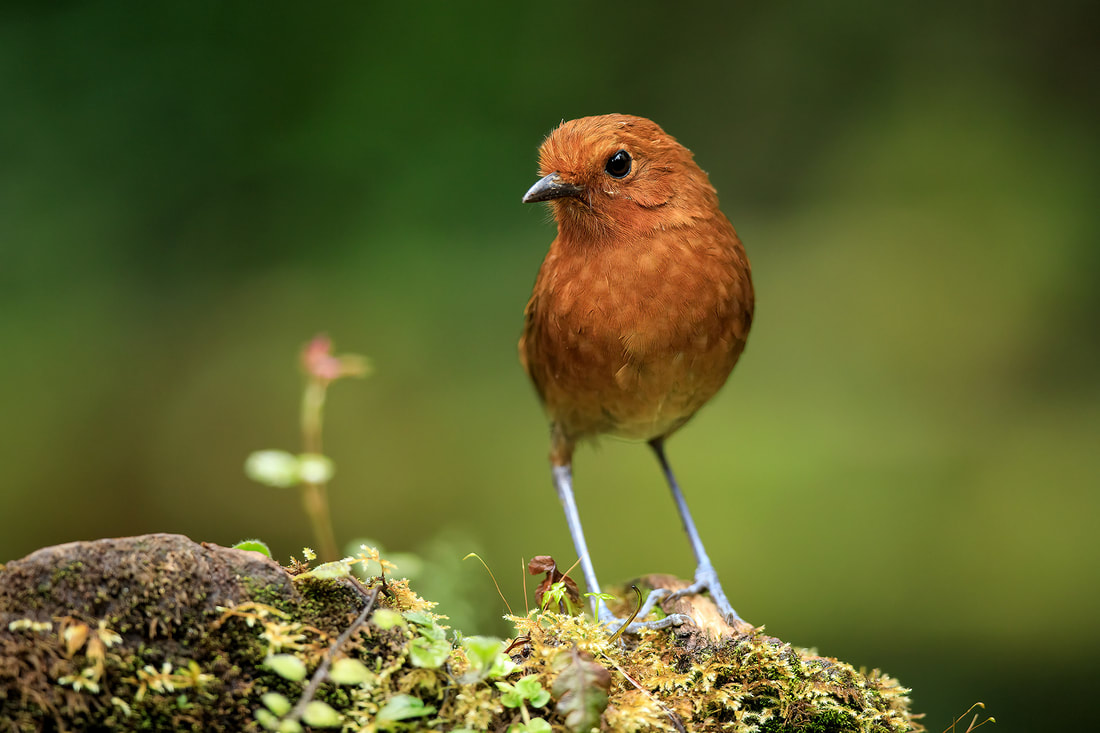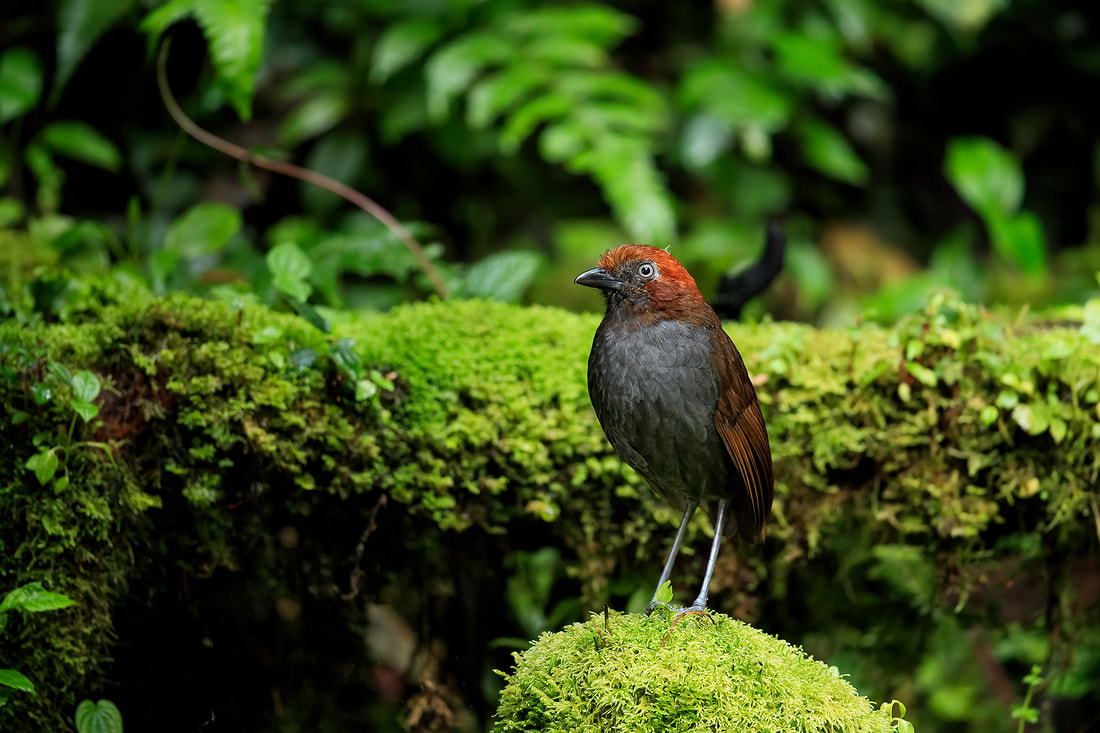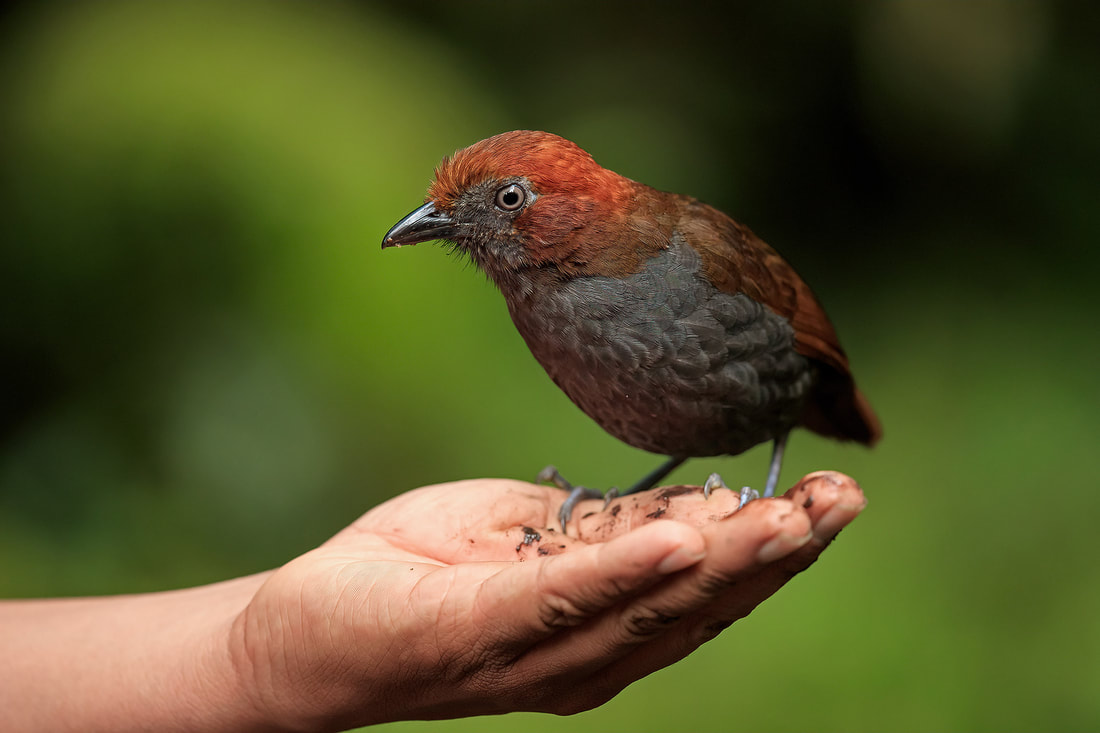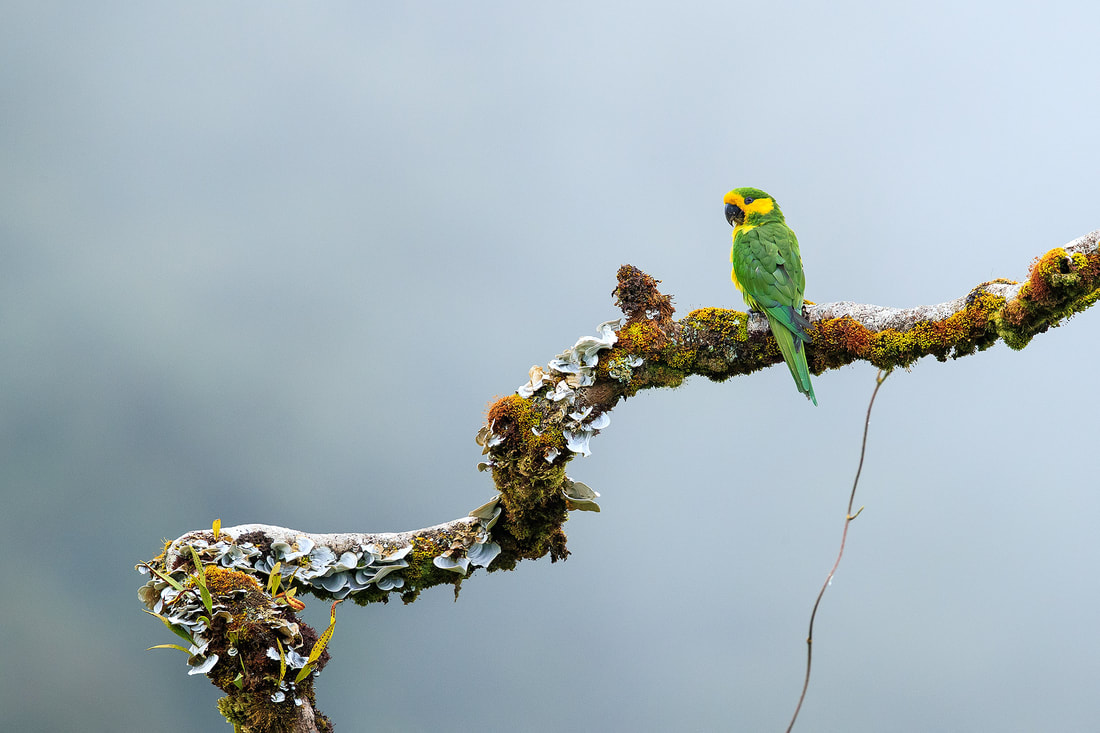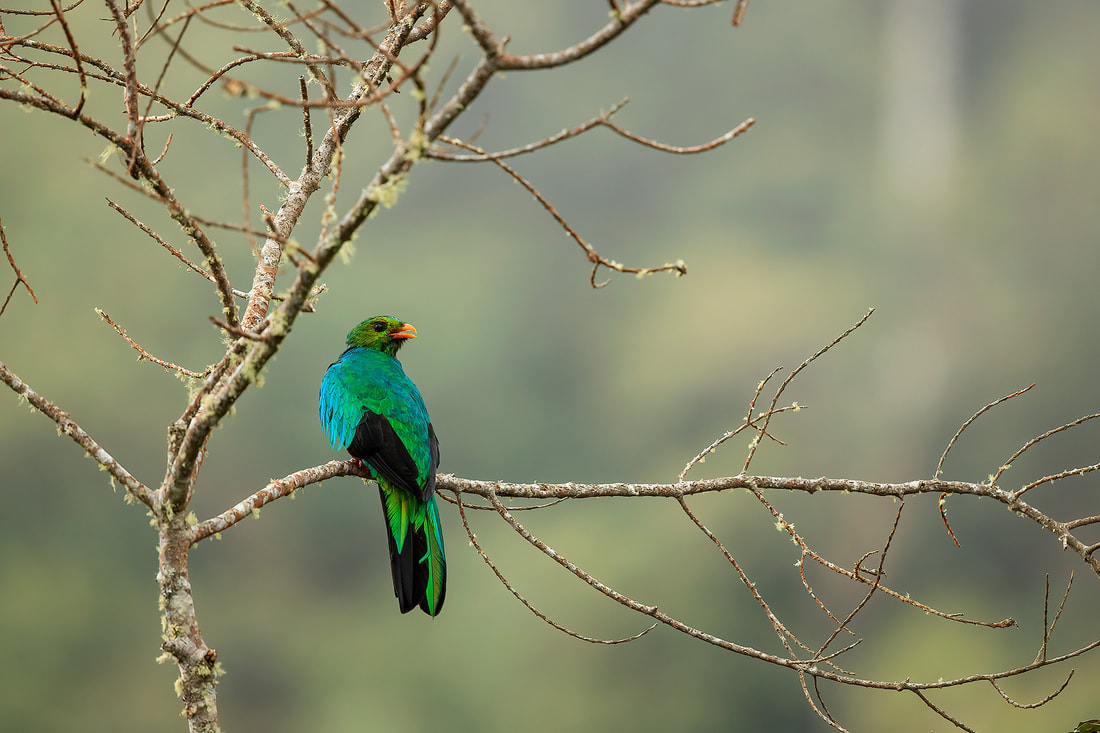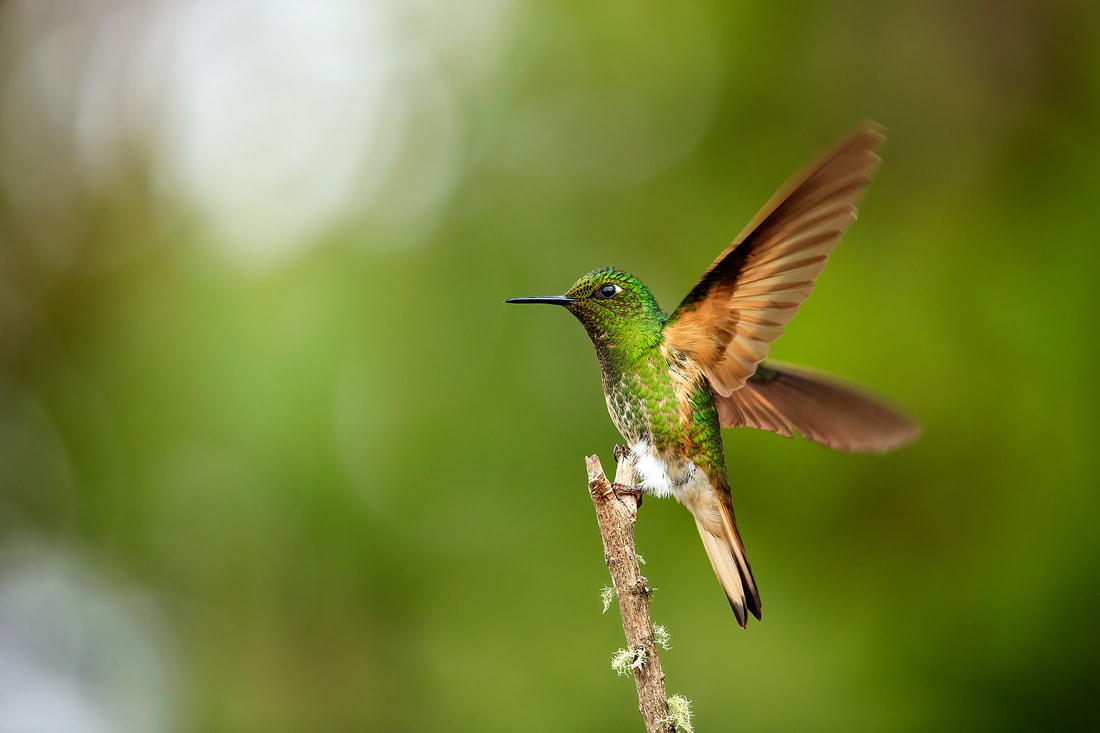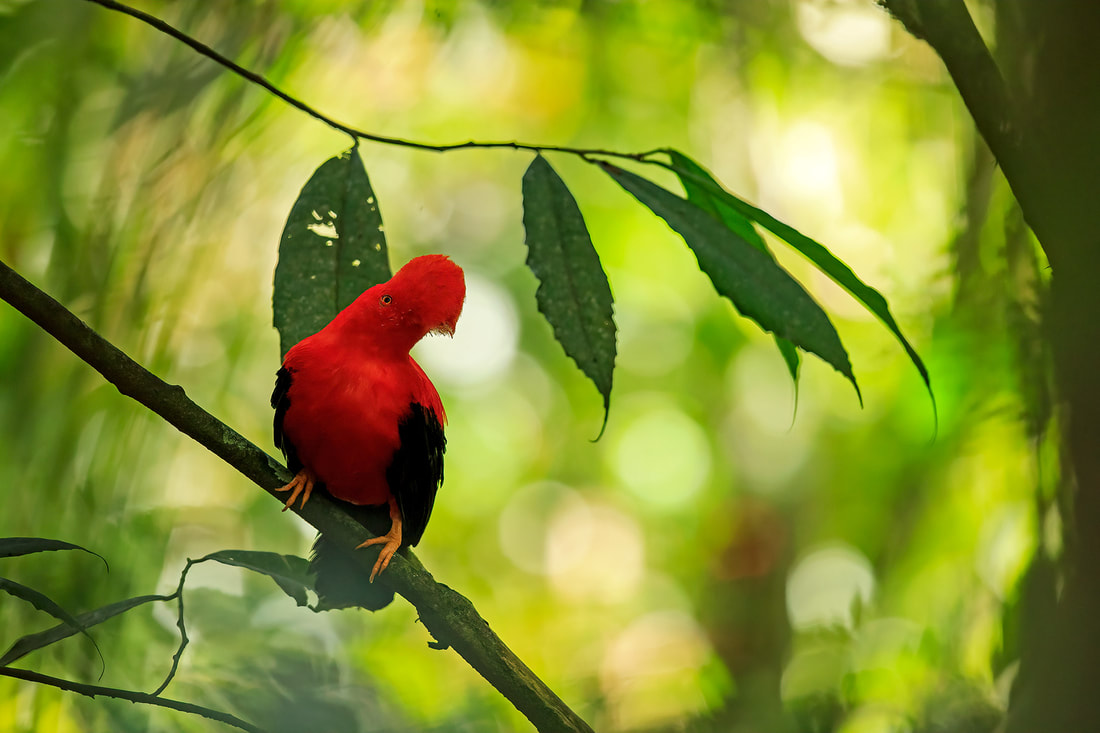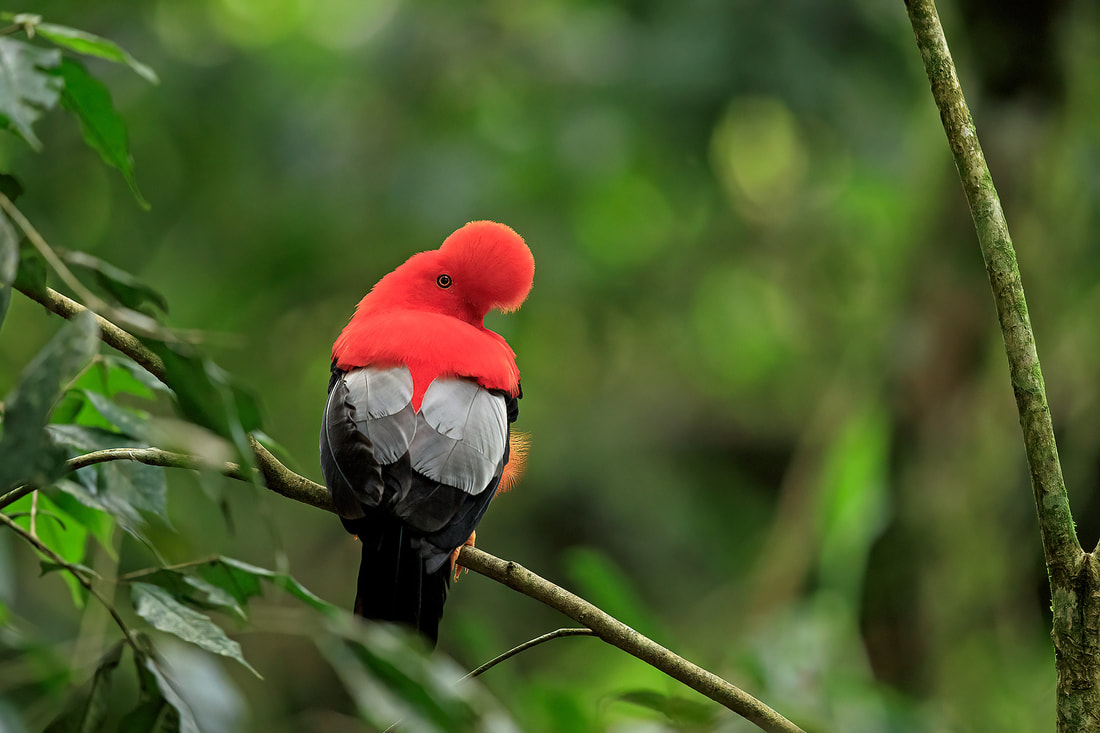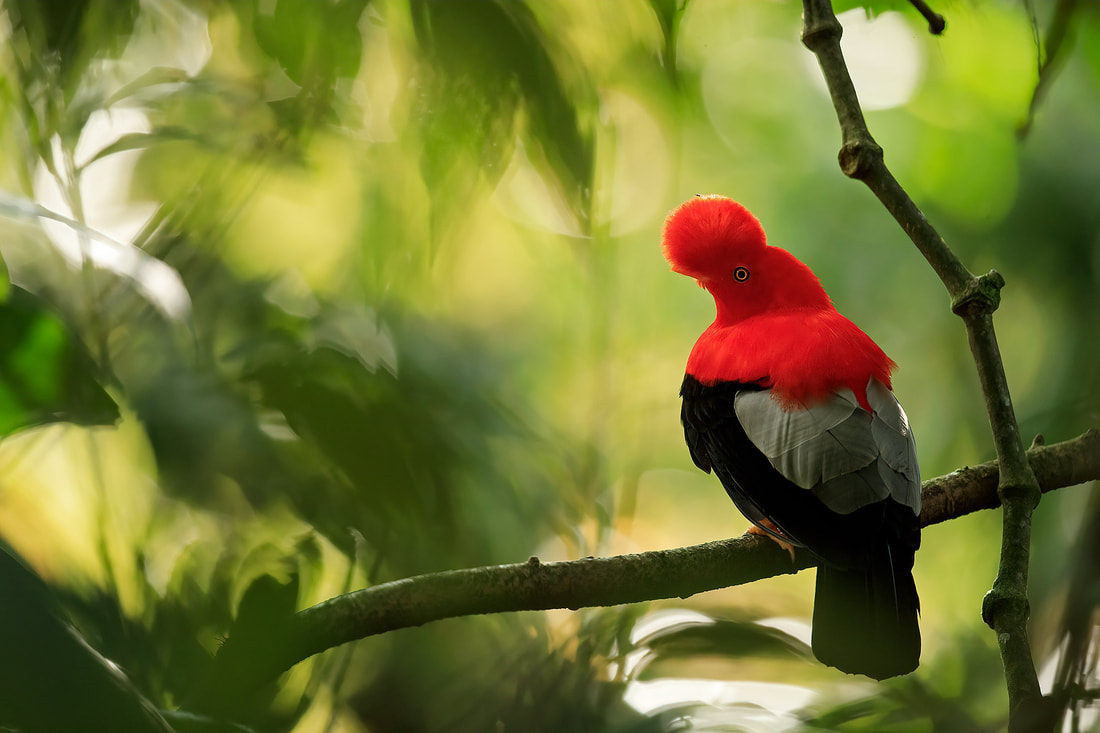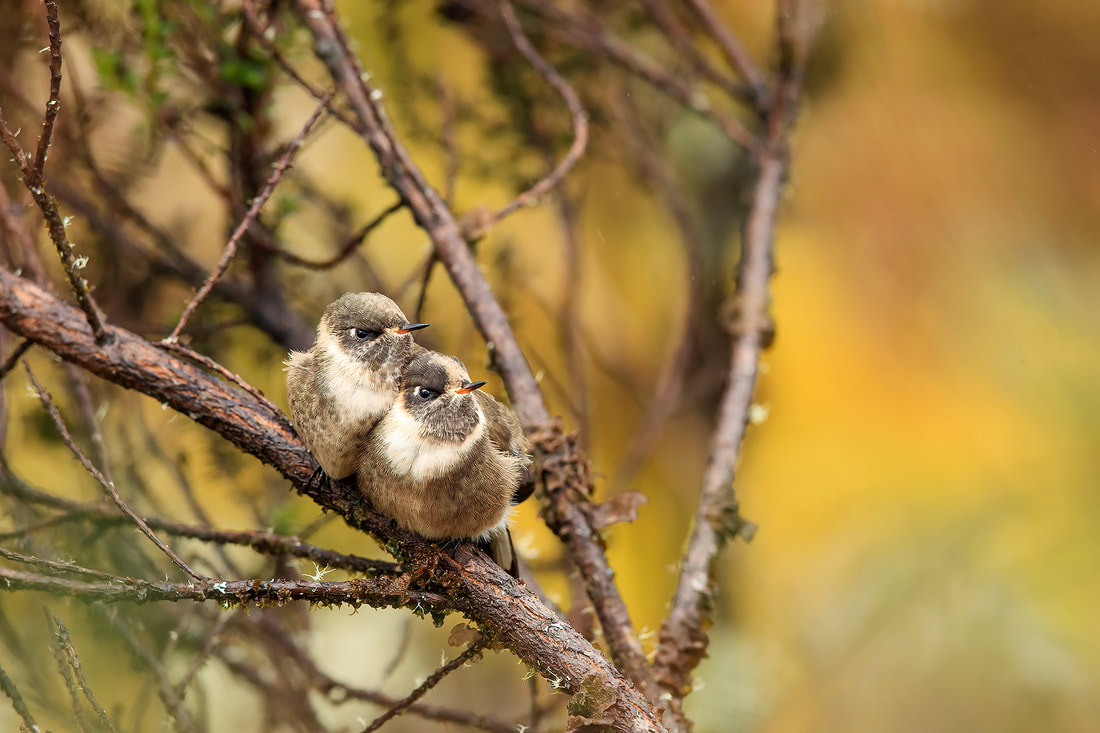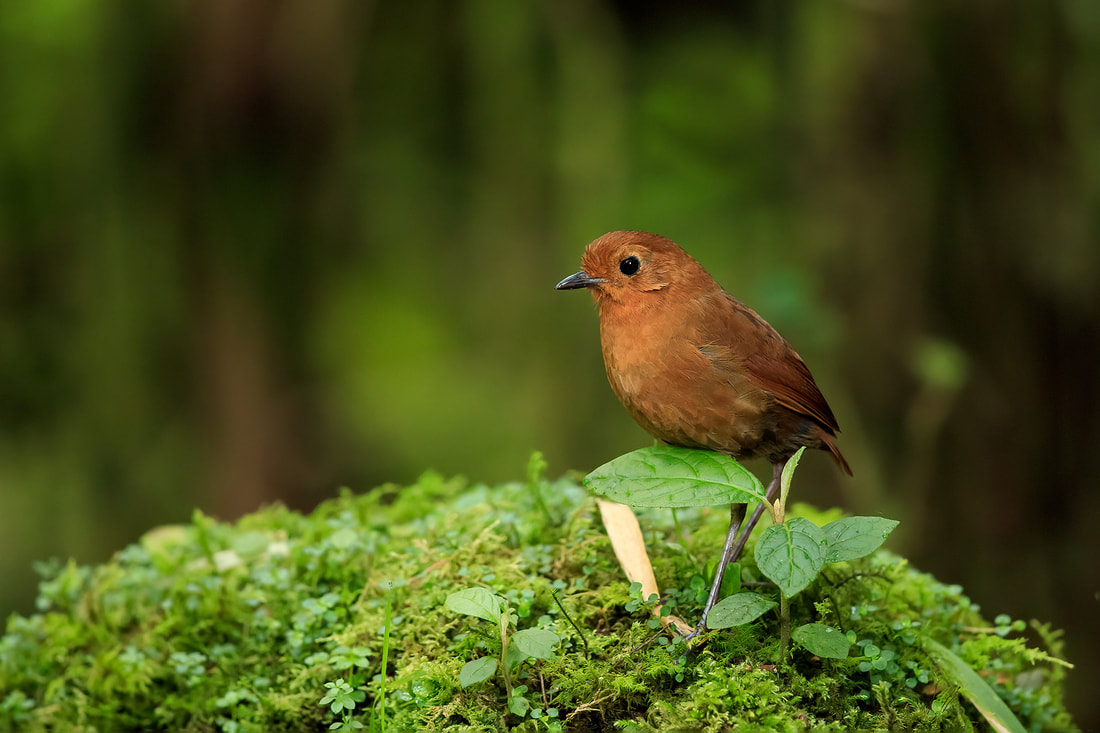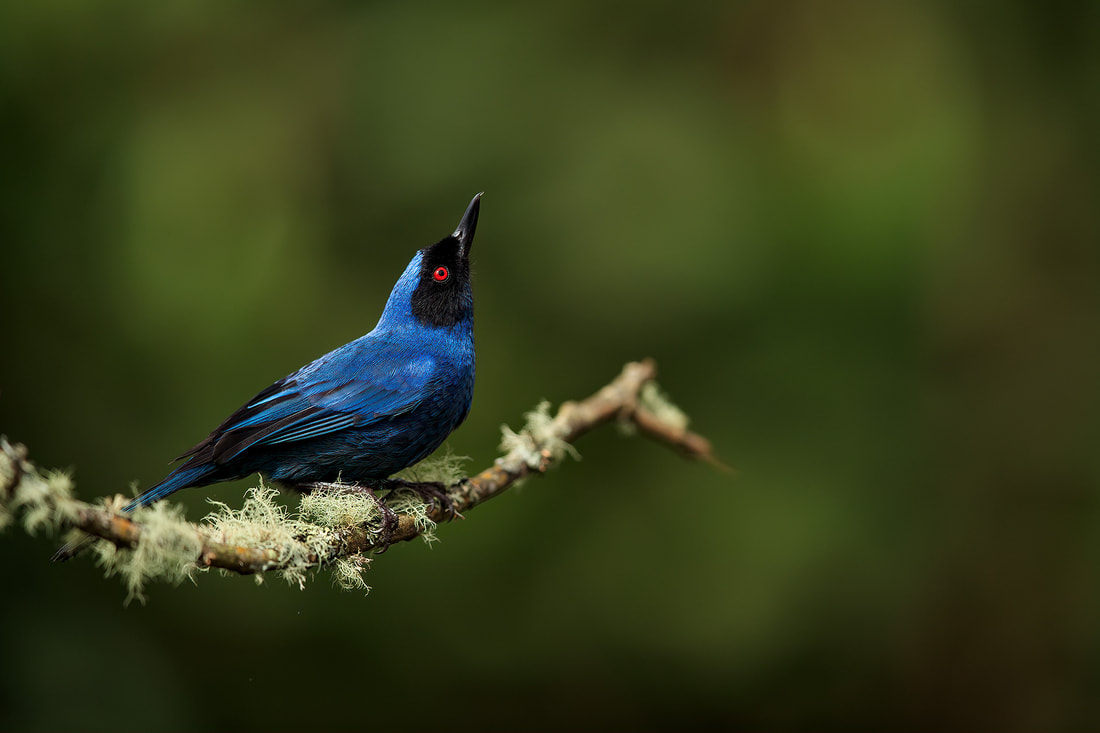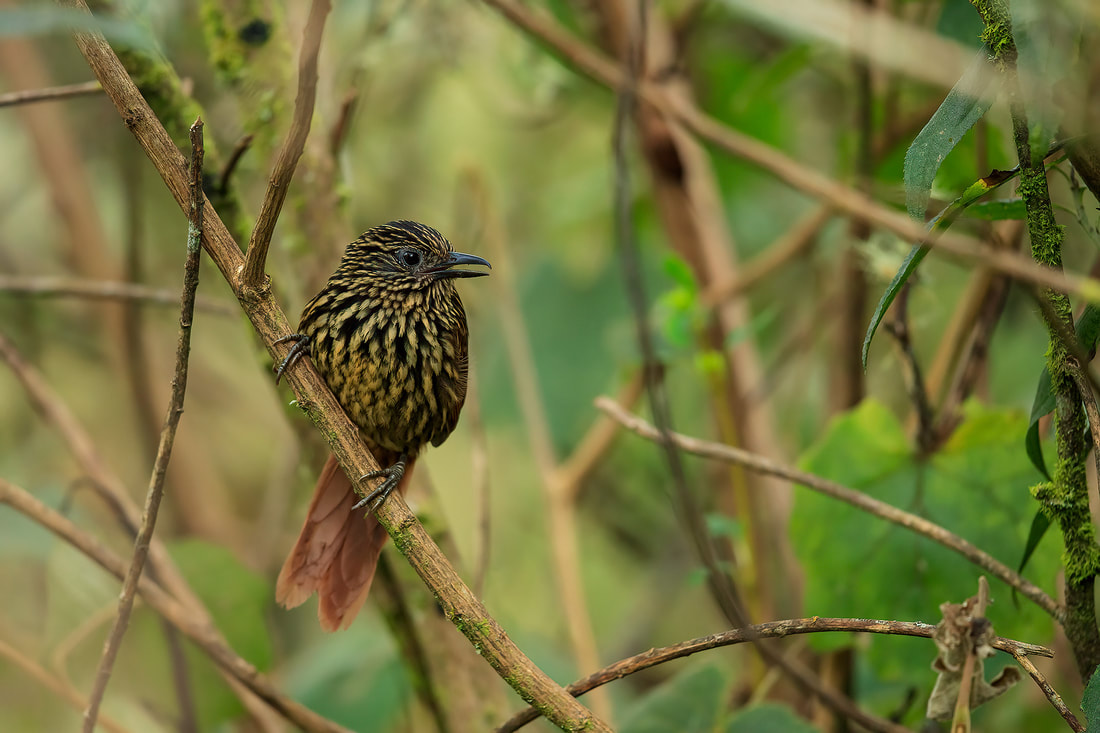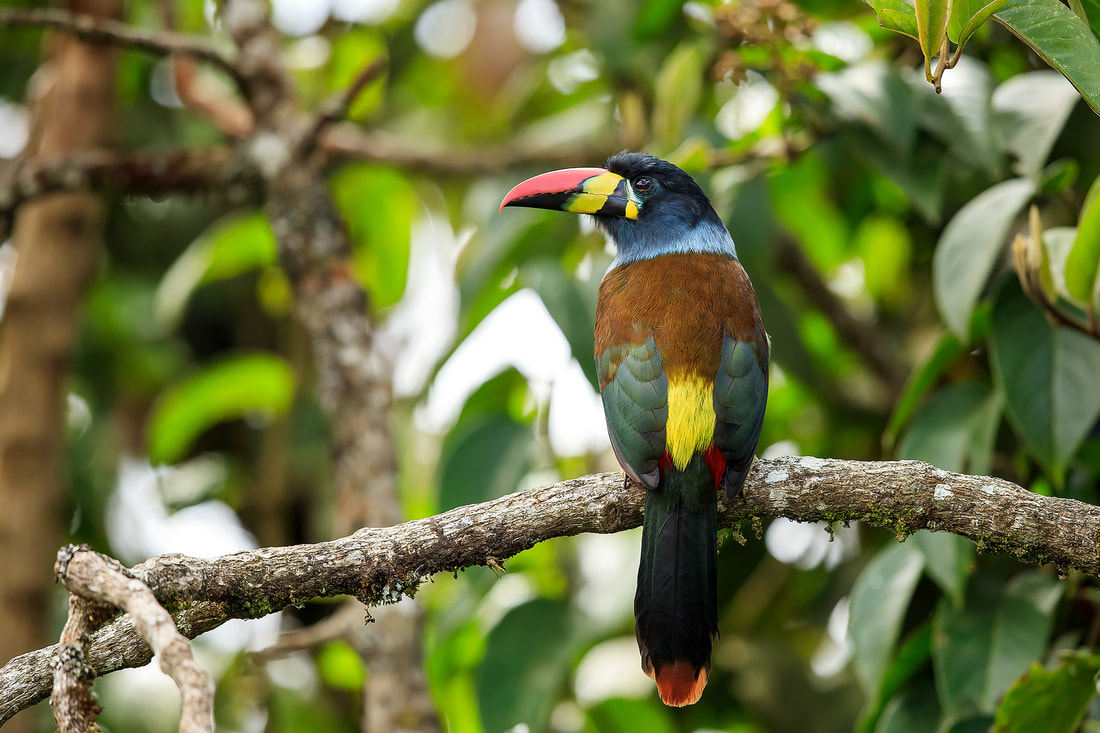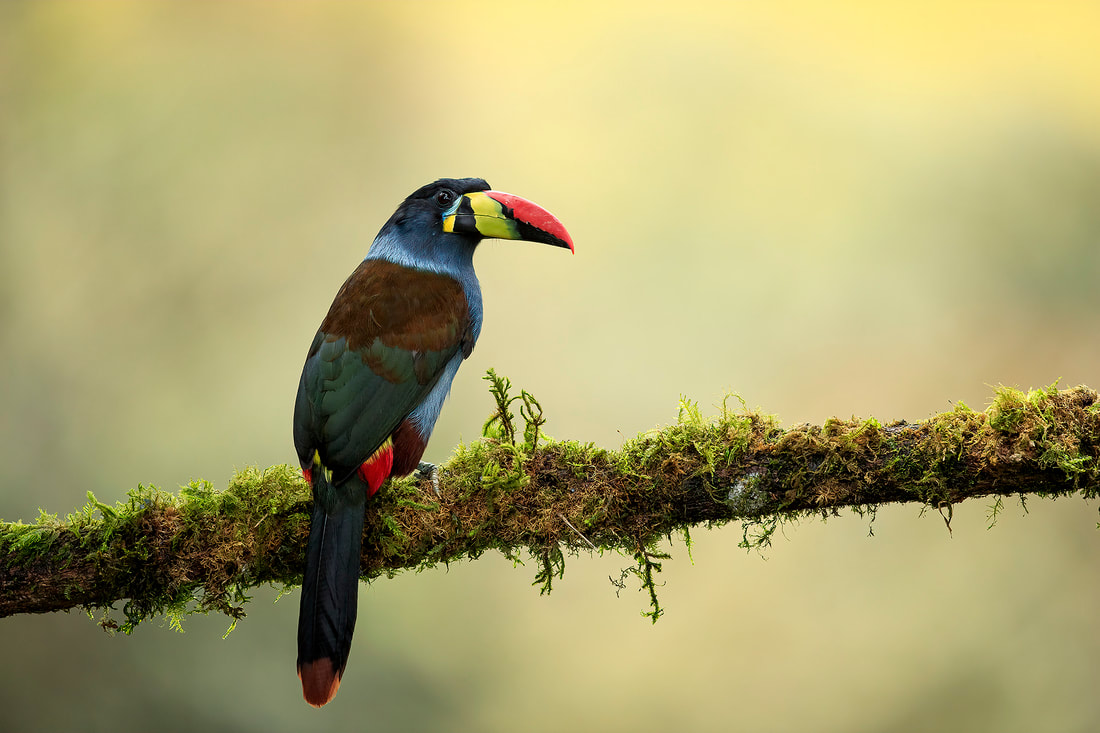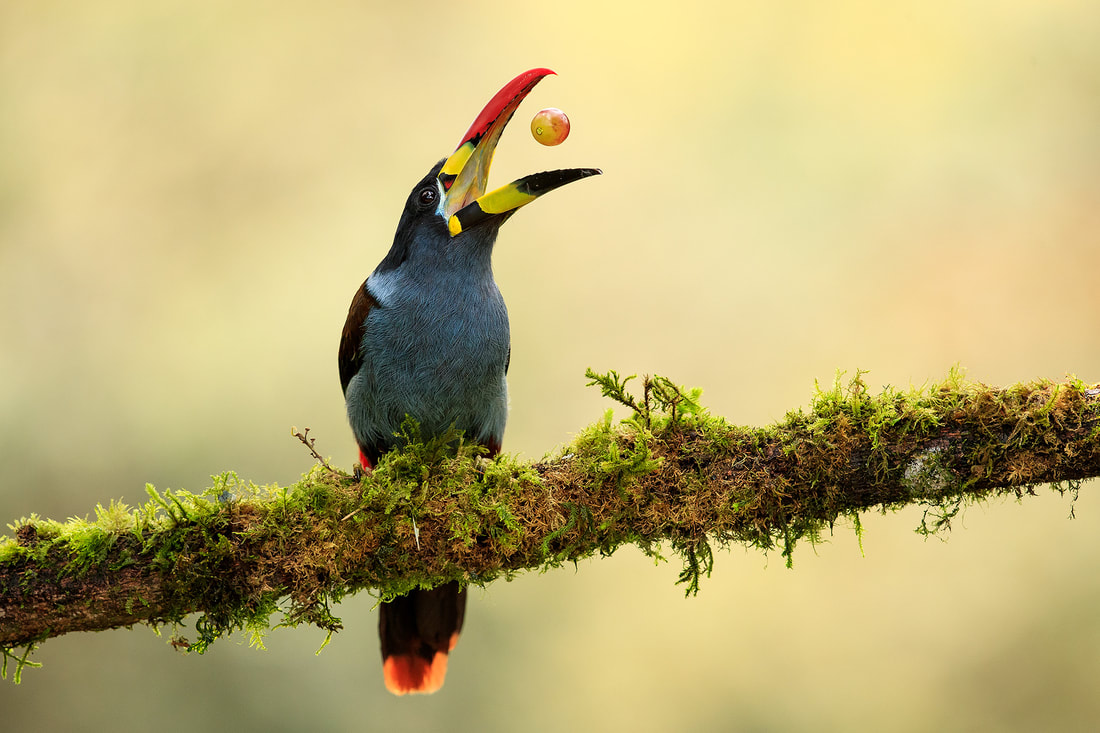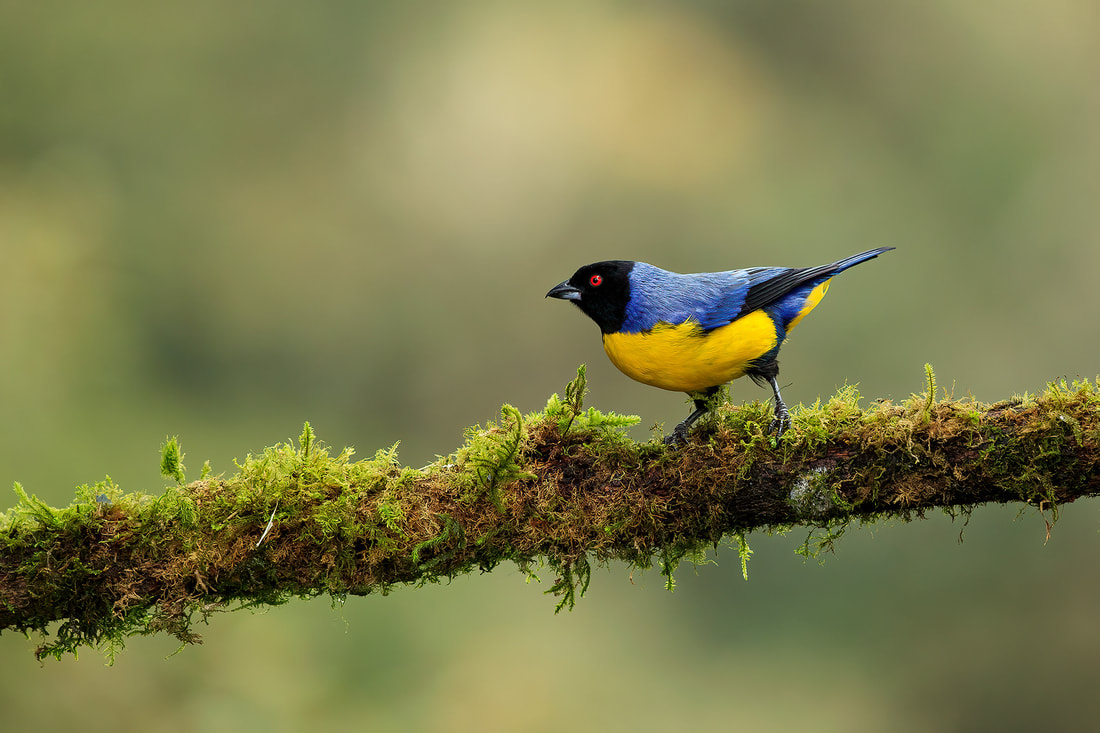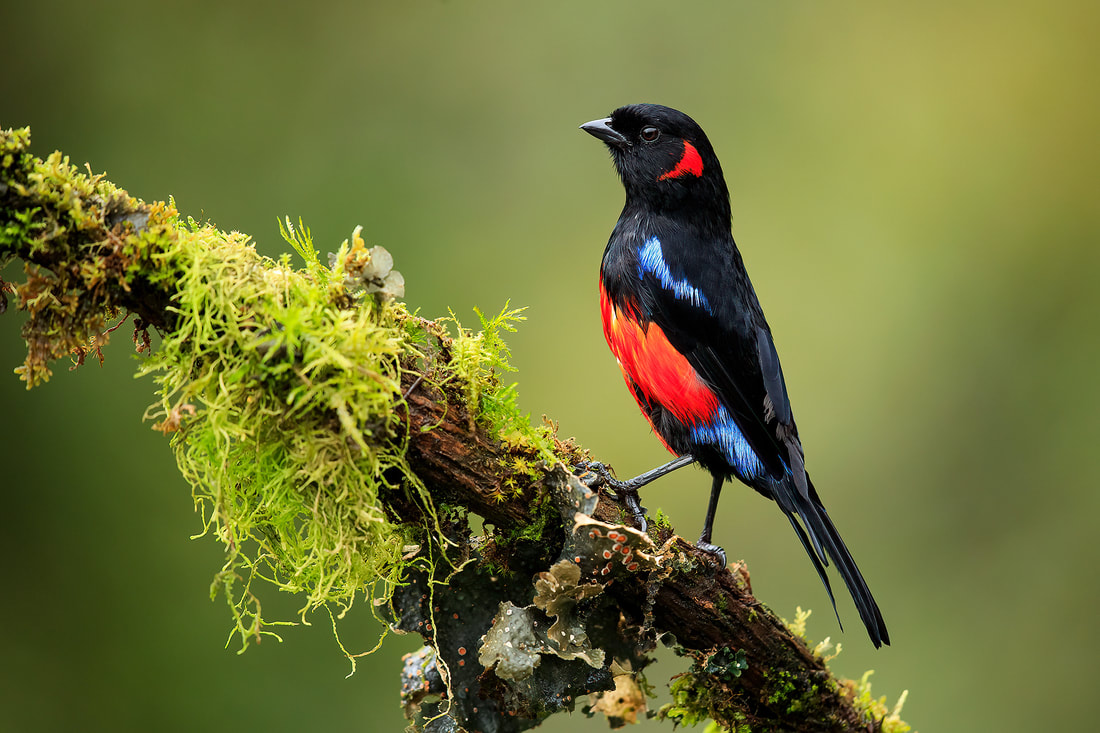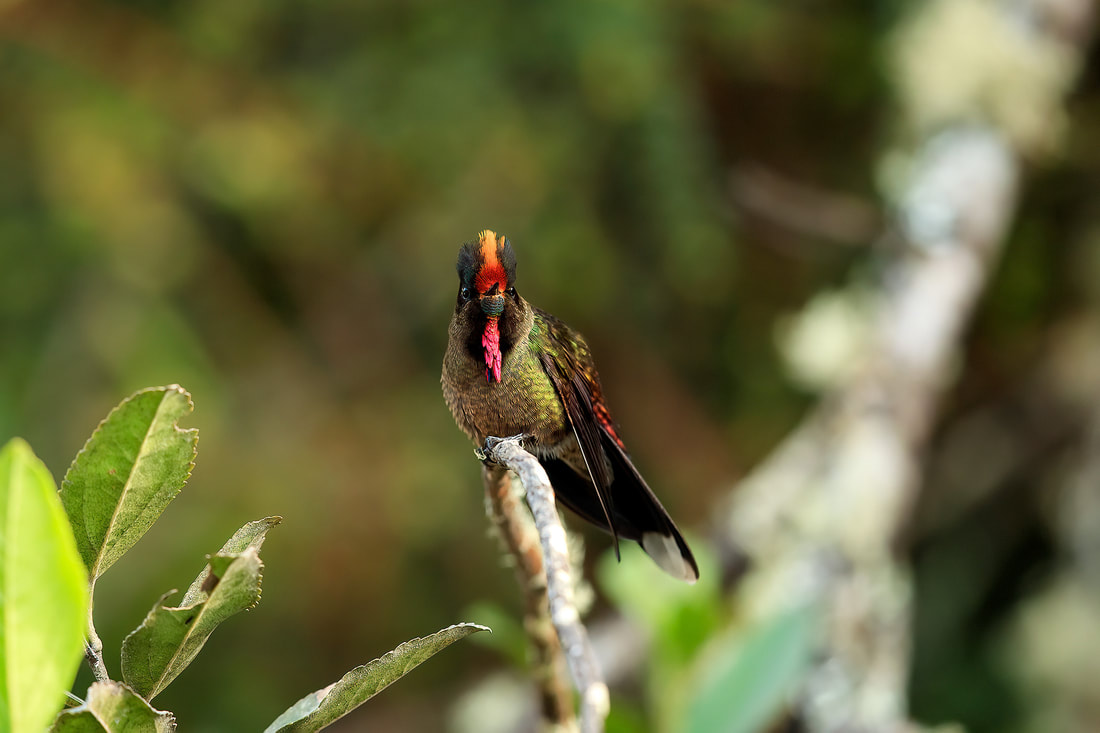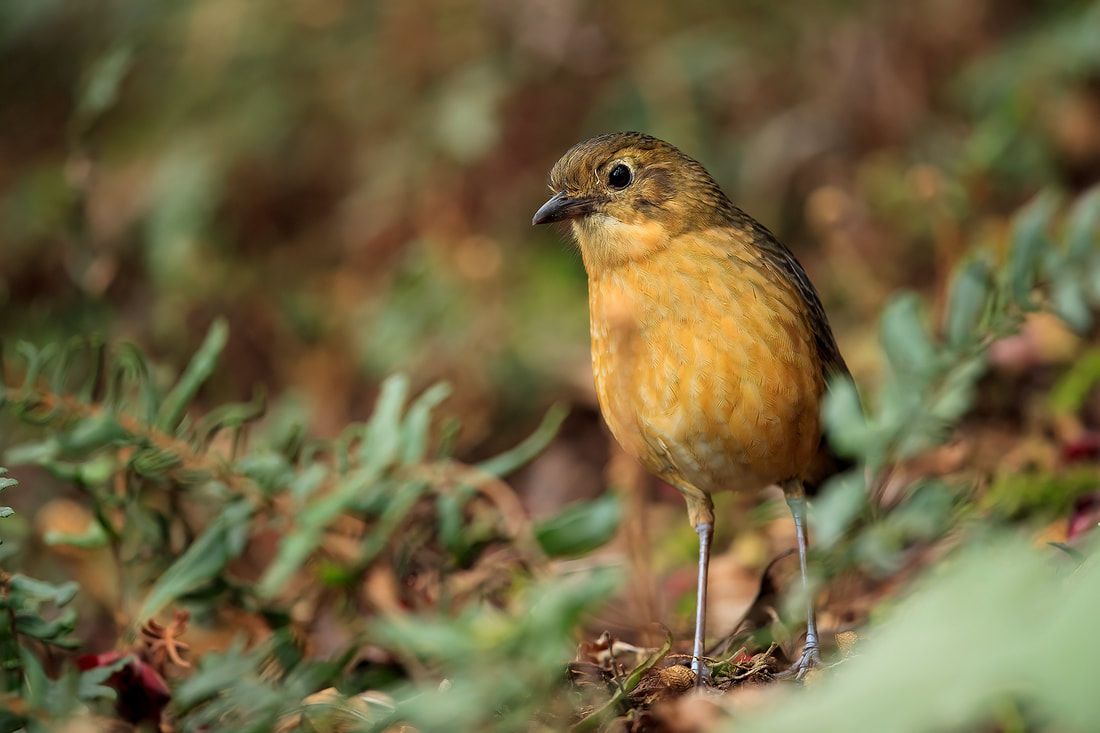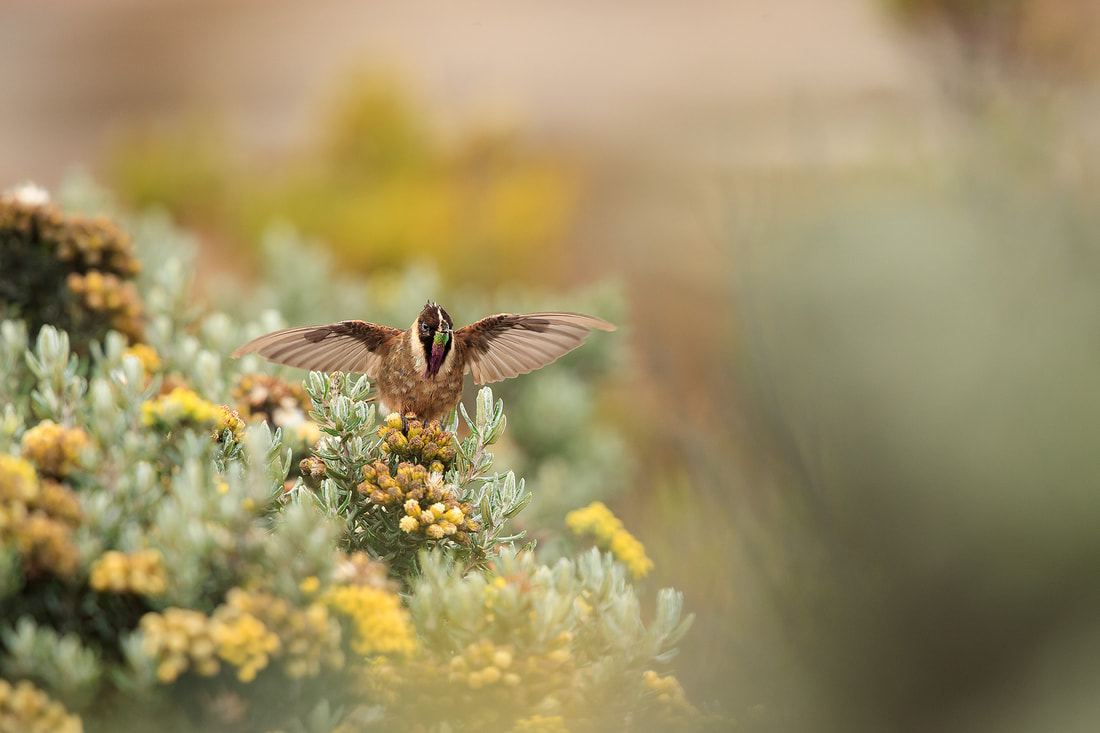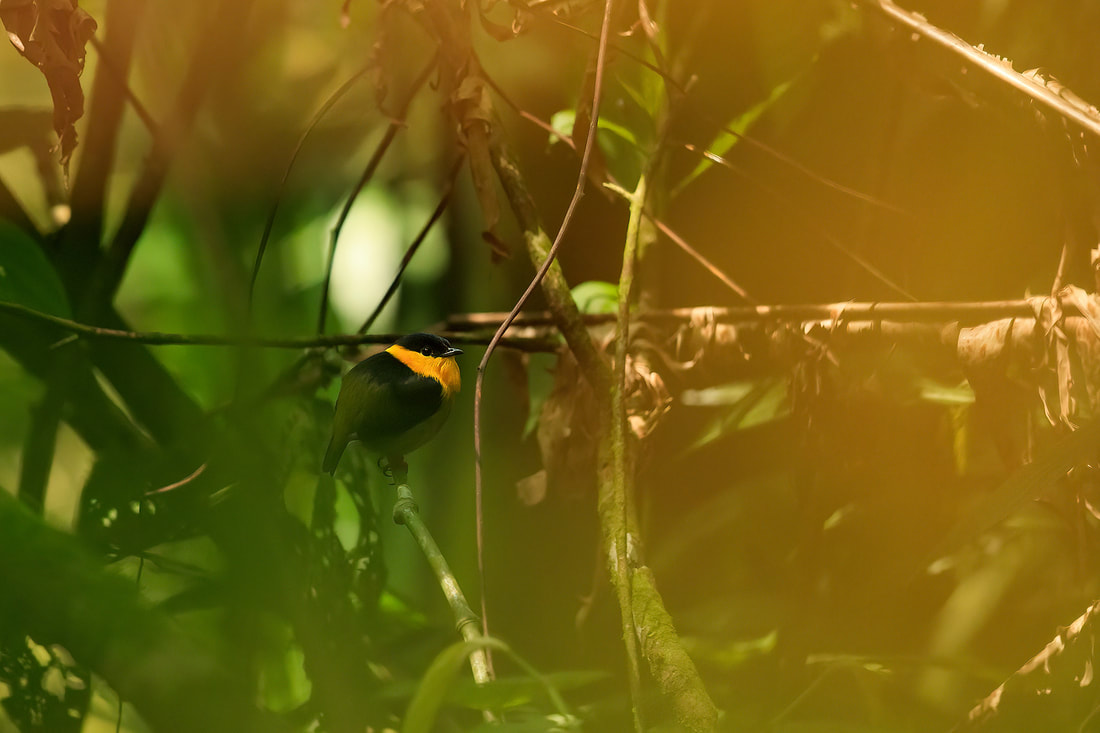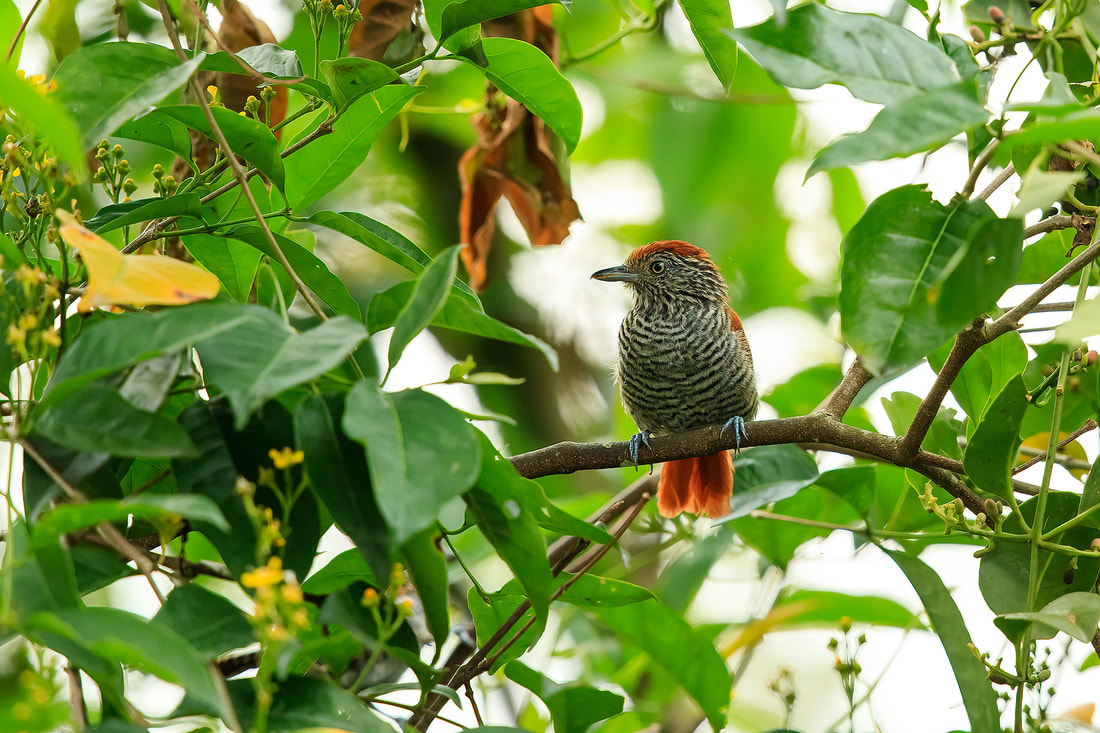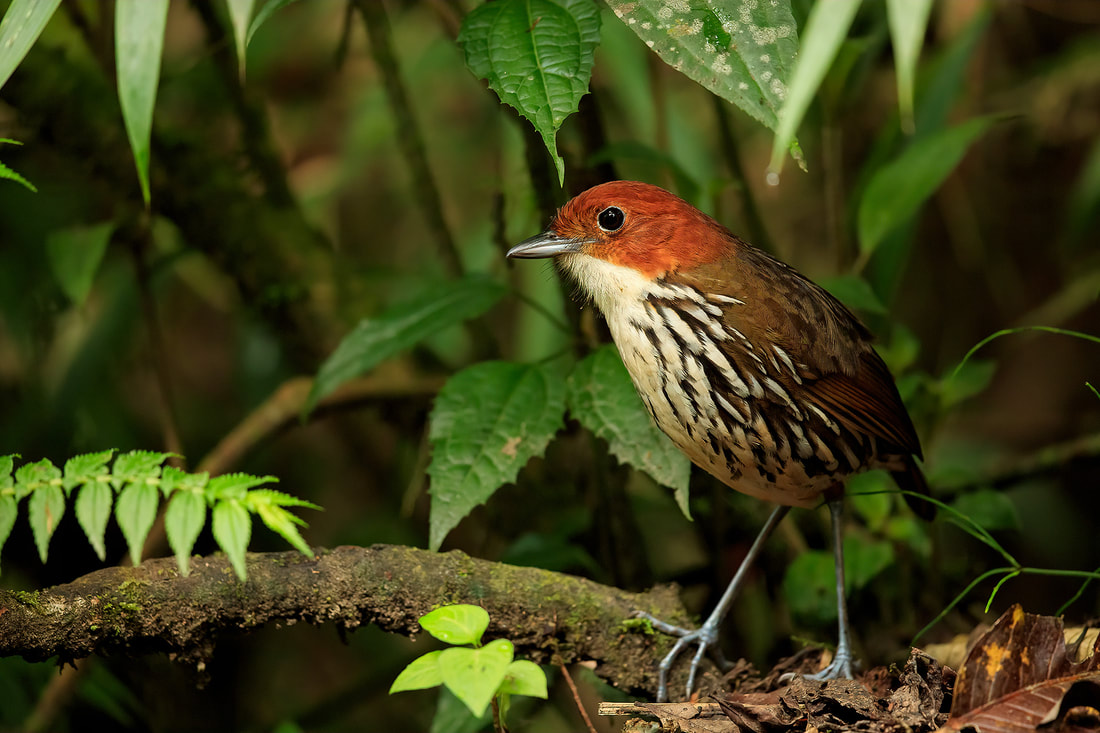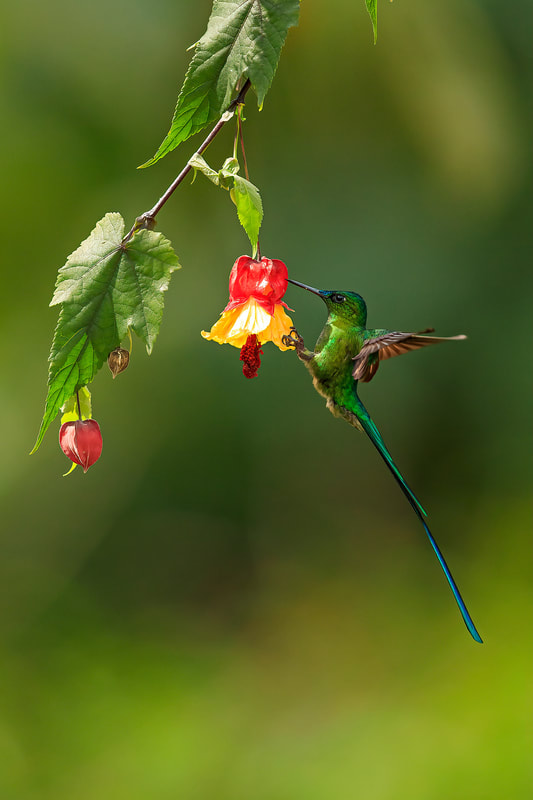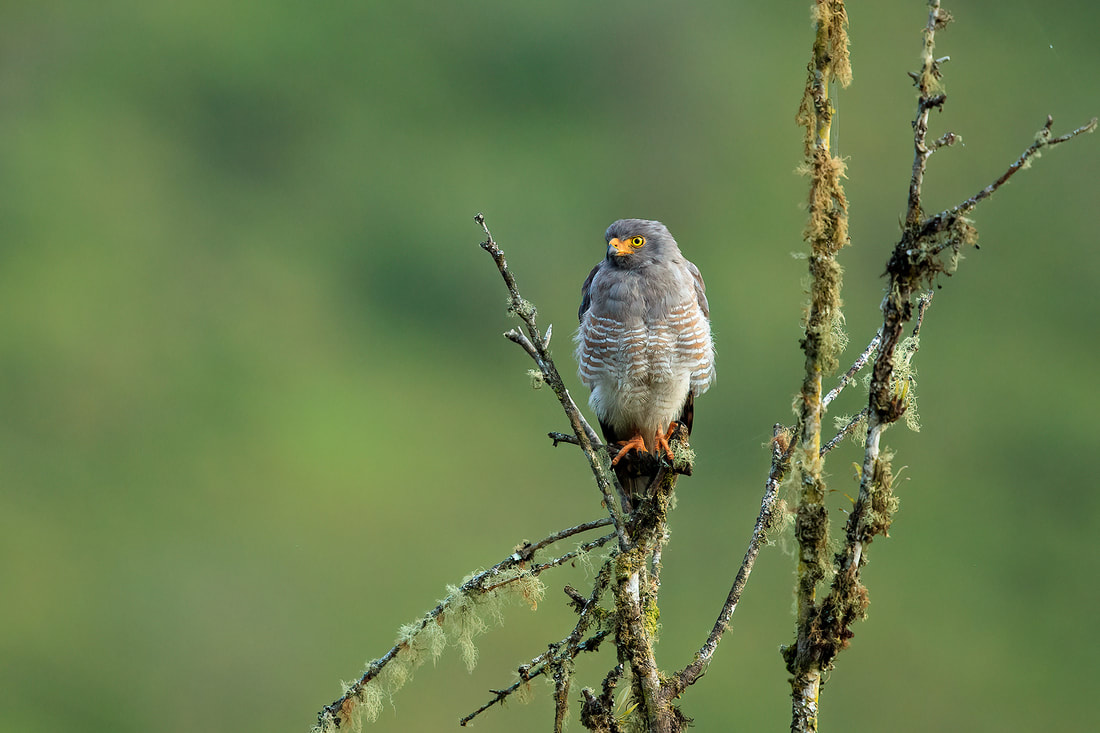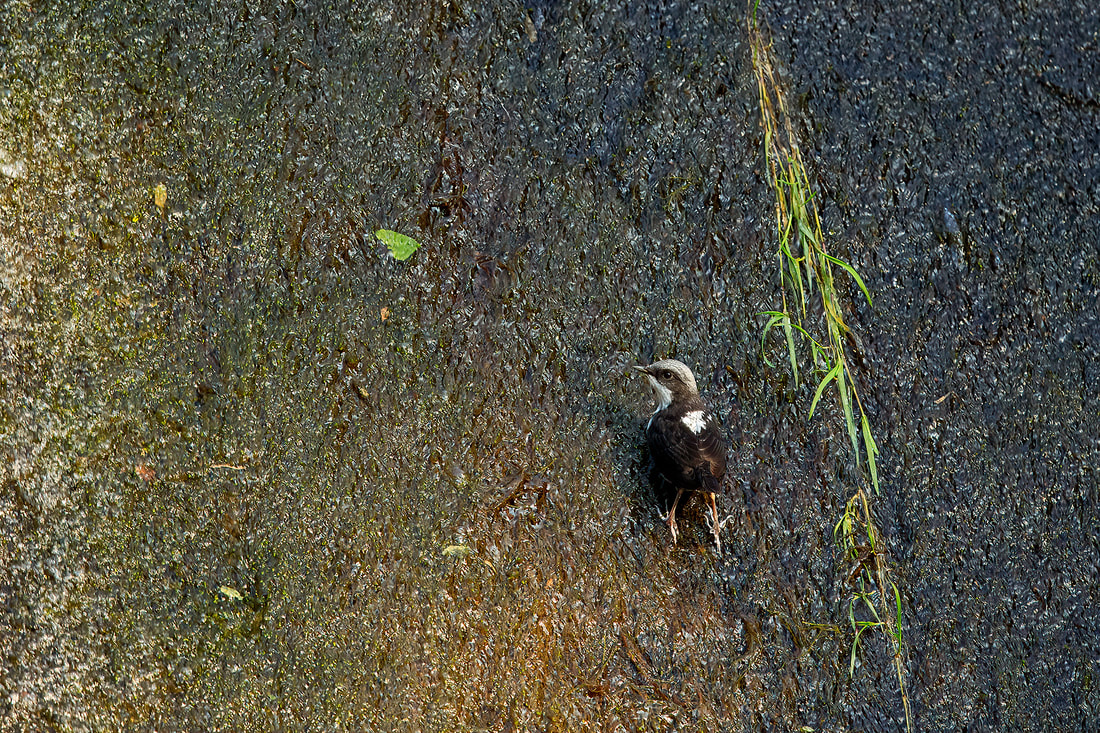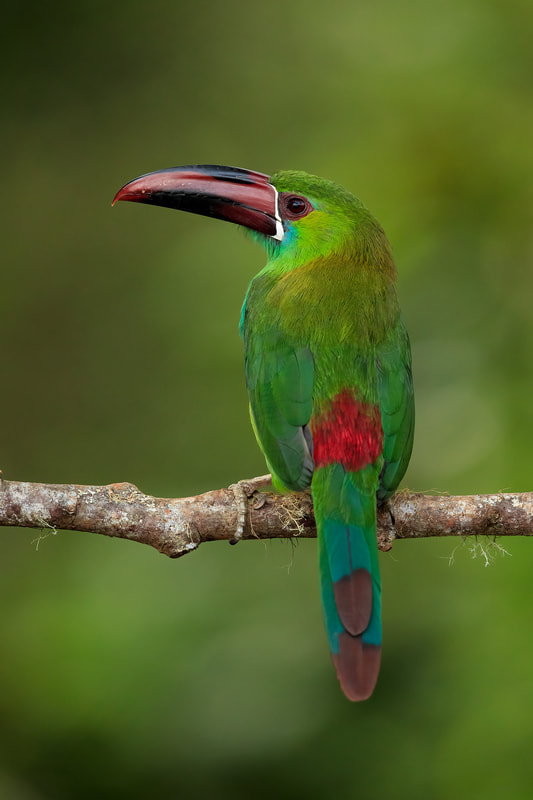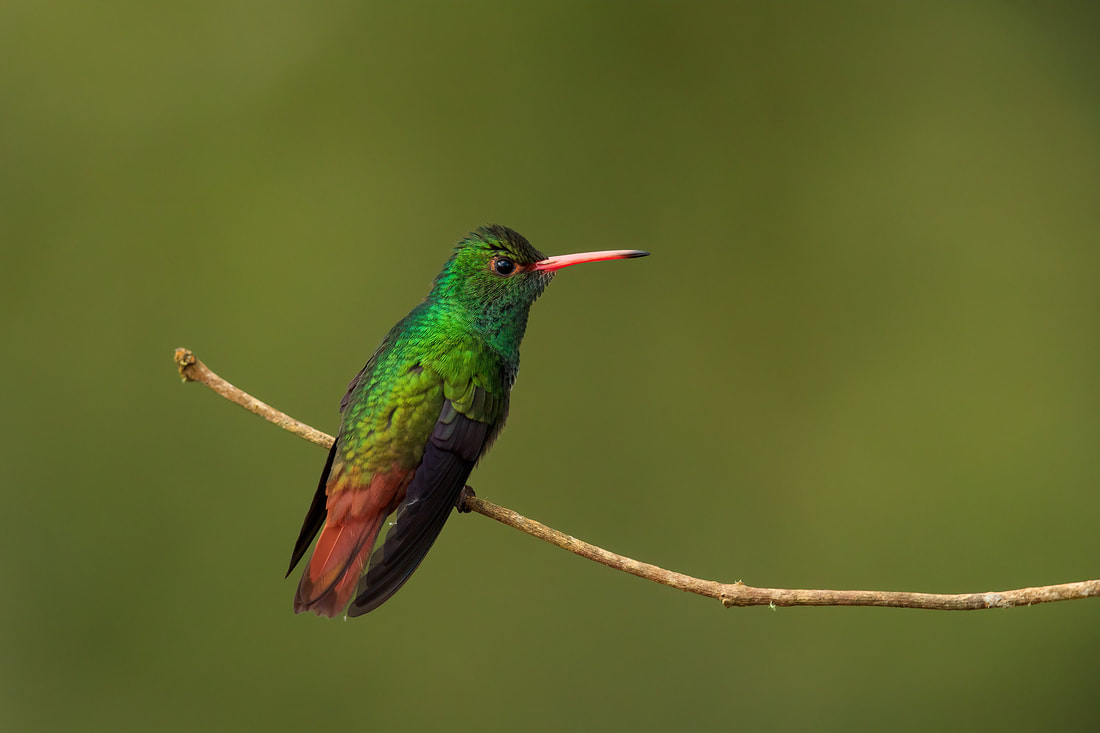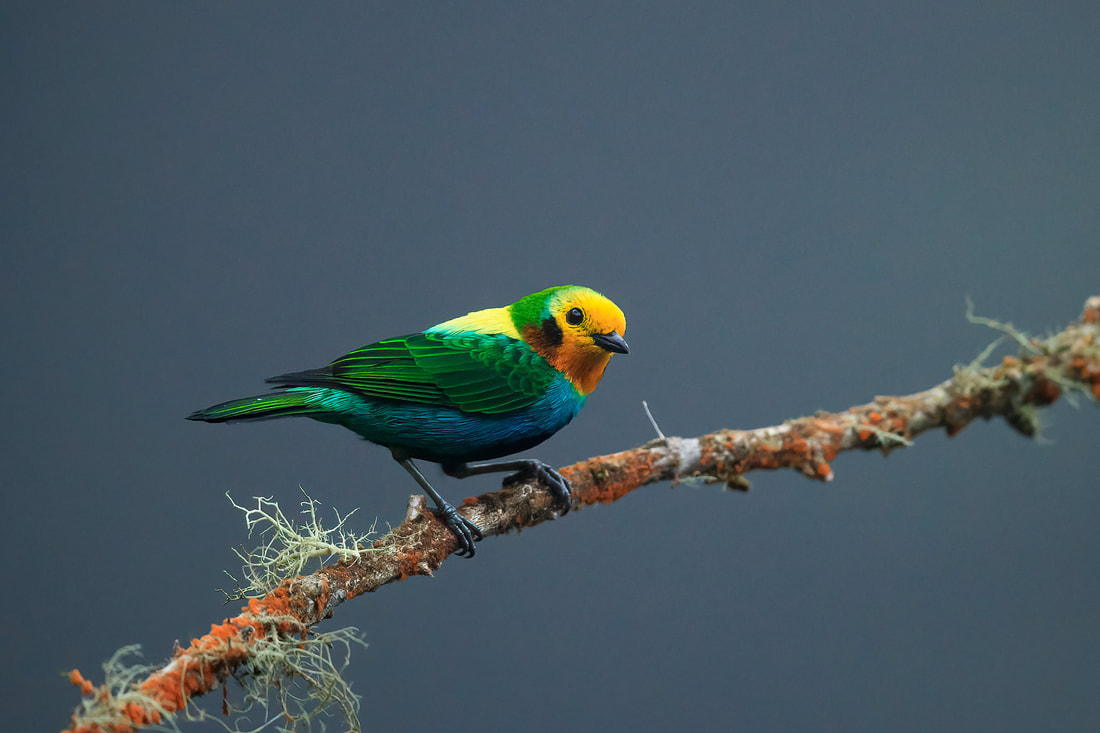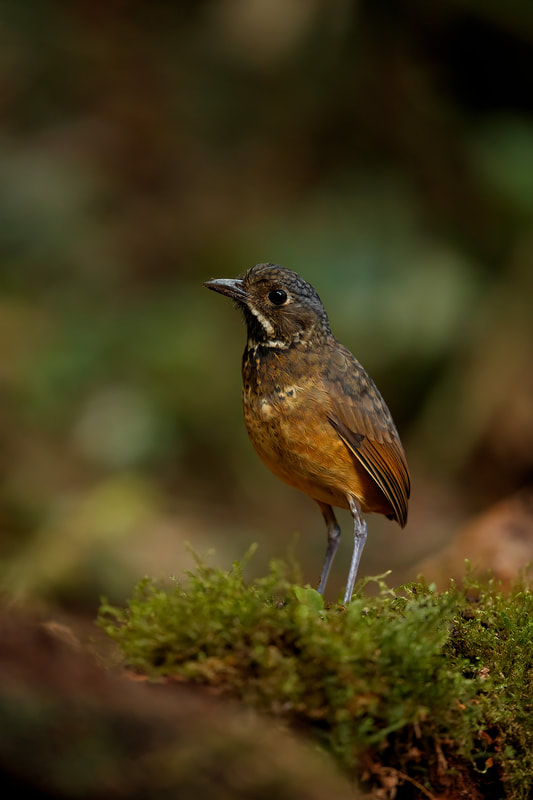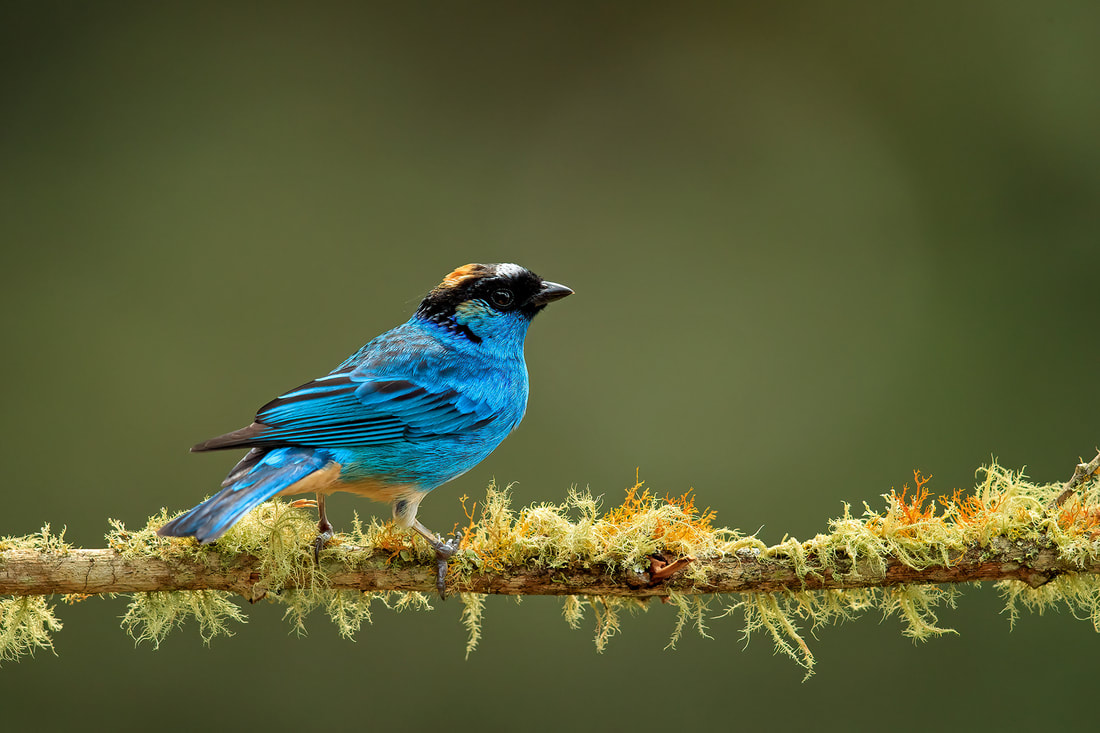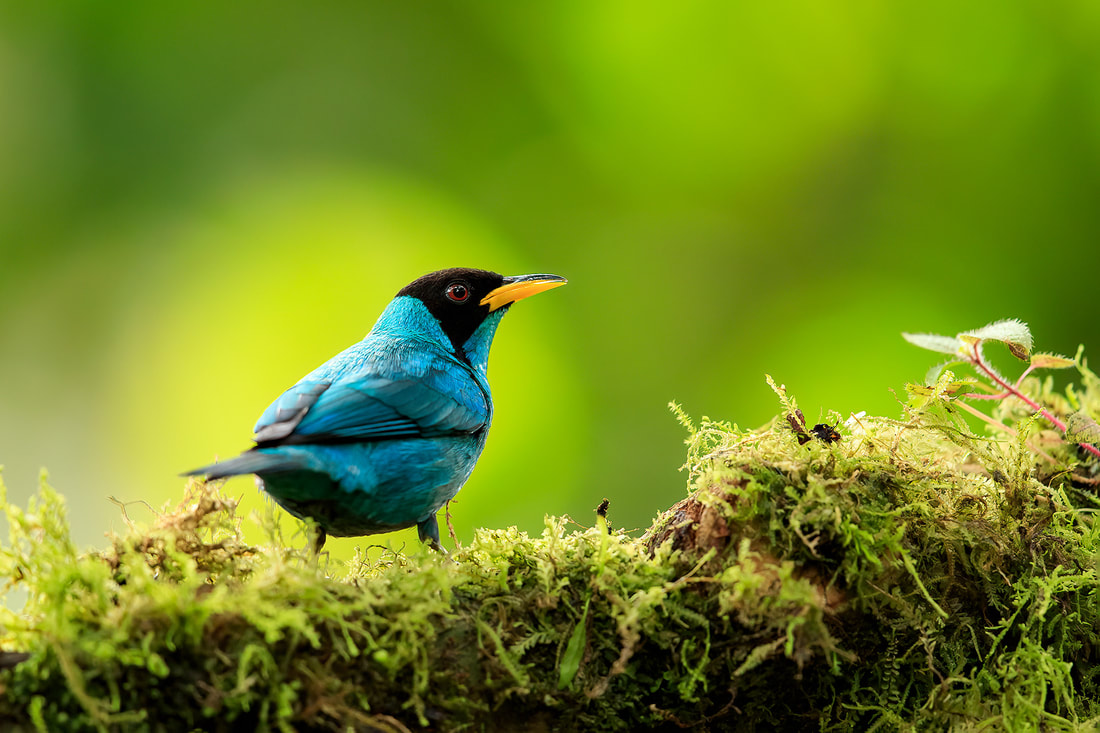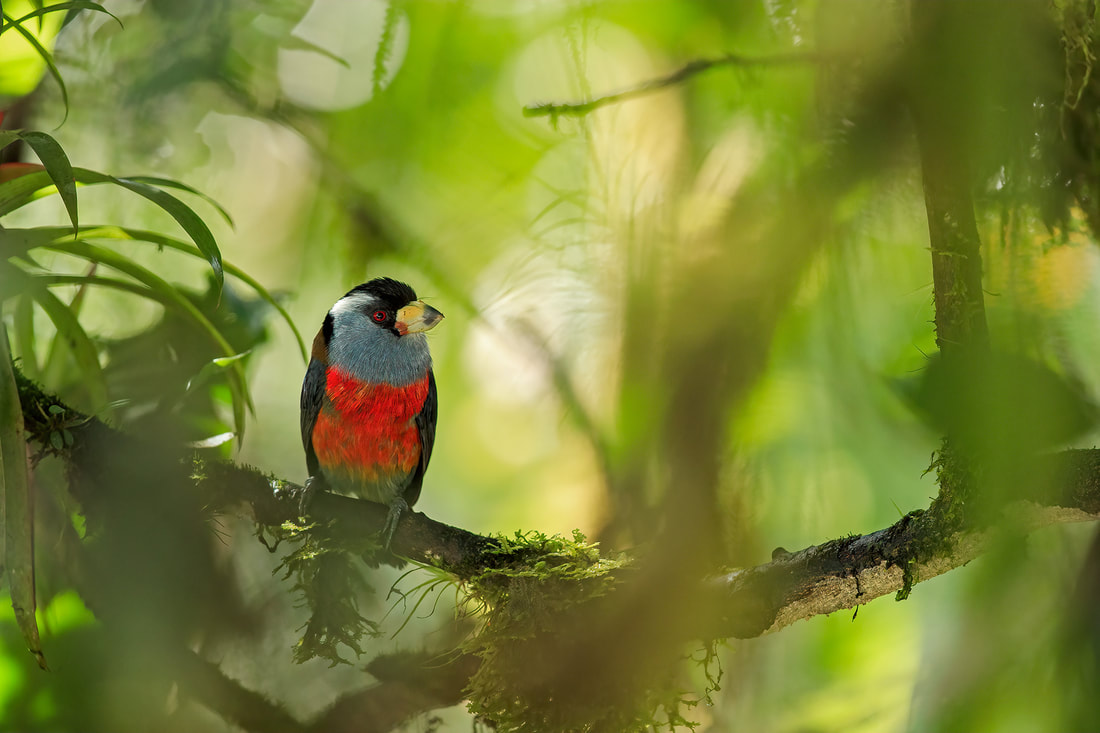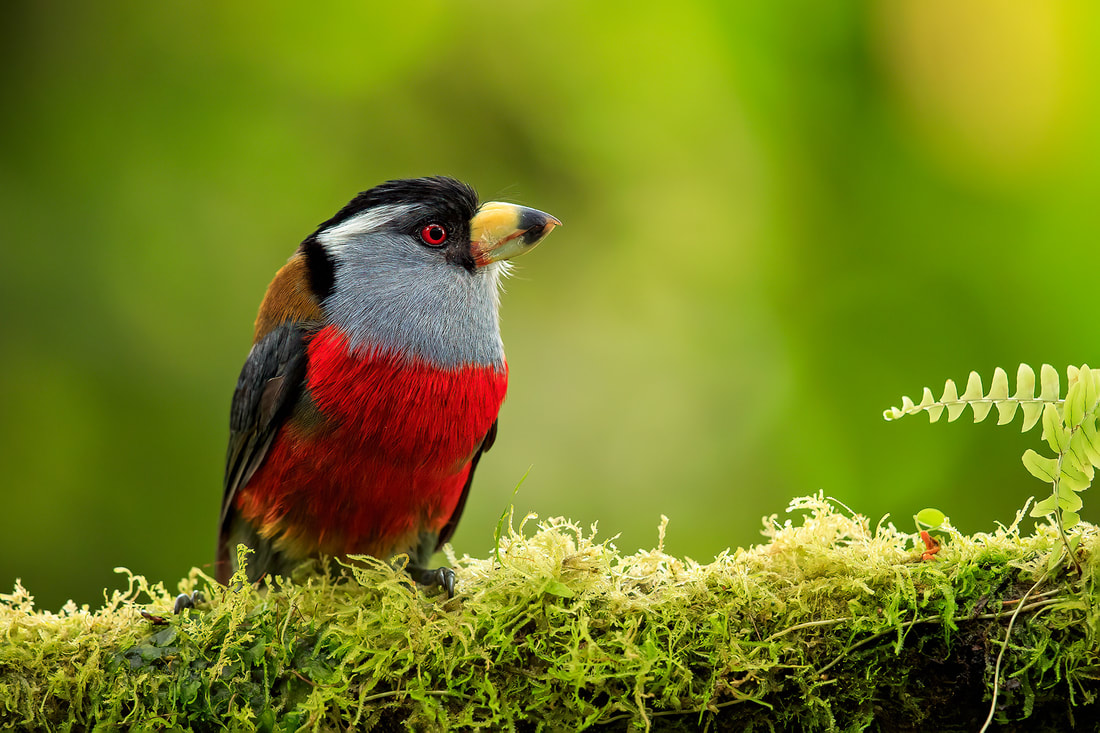|
Where do I begin? Well, firstly I must say that I have been utterly useless in keeping the blog up to date. An awful lot has happened in the past 4-5 months, including moving house to the Scottish Highlands, leadings tours left right and centre and of course, photographing the world's magnificent wildlife. Anyway, enough about that, it is finally time to finish off sharing my imagery from Colombia. Enjoy! To start with, I am sharing a few images of the charming Chami and chestnut-naped antpittas. These charming little birds have been habituated above the historic town of Jardin in the western Andes of Colombia. Both birds were the perfect posers and we were able to enjoy some fabulous photography. After spending around an hour in the cloud forest photographing these magnificent birds, we descended down to the road which gave us another incredibly special species, the yellow-eared parrot. Here it sat atop of the most magical perch, the only downside was the rogue tendril beneath this beautiful bird. We then continued further along the road, spending the morning in the surrounds of a local garden. This lovely garden, perched on a hill-top with spectacular views of the cloud forest above and farmland below, was a haven for countless species. The highlight was undoubtedly having fantastic views of the golden-headed quetzal. As well as exploring above the town of Jardin, we were able to visit the Andean cock-of-the-rock lek situated on the river that runs along the town's edge. It is possible to find up to 20 different males showing off as they try to attract a mate. Making an awful racket, they do their best to show off their magnificent plumage. This really is a spectacle and the photography opportunities are exceptional too. With time nearly running out on this bird photography extravaganza, we had one last day out in the field trying to find yet another endemic species. This time, we were in Parque Nacional Natural Sumapaz and our target bird was the green-bearded helmetcrest. The weather had taken a turn for the worst at this high-altitude paramo habitat, and so we searched for this diminutive species of hummingbird in the freezing rain and strong winds. We really struggled to find any adults in their finest plumage, but were instead spoiled with exceptional views of a pair of fledglings. This was arguably even more special than seeing an adult as these youngsters are rarely seen.
0 Comments
I hope you have been enjoying this series from the trip I led to Colombia for Wildlife Worldwide? For the third instalment I am taking you higher in the Central Andes in search of some real specialities. We left Manizales and started our climb ever higher up to Nevado del Ruiz - a towering volcano home to a variety on habitats and countless species. Our first stop was the charming hillside property of Hacienda el Bosque. This working cattle farm has committed to protecting its high altitude forest and is actively planting corridors to help wildlife flourish on the property. It is little wonder that the property is a haven for numerous rarely seen species including the flammulated tree-hunter, grey-breasted mountain toucan and hooded mountain tanager. First up though was the equatorial antpitta at a feeding station before we went in search of the spectacular array of hummingbirds. What an incredible start to our day at the hacienda. In my opinion it only got better as the real stars made their appearance a little later on ... It was time for the grey-breasted mountain toucans and hooded mountain tanagers to put on quite the performance. As I am sure you can see, the photography was exceptional thanks to our magnificent subjects. I was blown away by the photography opportunities and the birds were just stunning. From here, we headed further up the mountain in search of higher altitude species including an endemic hummingbird - the buffy helmetcrest. In fact we were also treated to incredible views of tawny antpitta, lacrimose and scarlet-bellied mountain tanagers and rainbow-bearded thornbill. We were incredibly spoilt, but it is important to highlight the amount of time that has to be put in to get the images you are after. I hope you have enjoyed looking through these images and discovering the wonderful birdlife that calls Colombia home. I really can't recommend visiting the Central Andes enough - it is a birder's and photographer's paradise.
Find out more about the trip on the Wildlife Worldwide website and book your place under the expect guidance of Ben Sutcliffe. I know. It has been a while since I last posted about the wonderful bird photography tour I led to Colombia for Wildlife Worldwide. I left you after photographing the absolutely beautiful toucan barbets of the western Andes. Today I am going to whisk you further north towards the city of Manizales and share with you a kaleidoscope of new colours and forms. Of course, with this being a bird photography tour, if you aren't a fancier of our avian friends, I suggest you wait for my upcoming blog on Zambia's South Luangwa National Park. So to start you off easy, here are a couple of images taken from the Tinamou private reserve. The first was the diminutive golden-collared manakin. This tiny bird was incredibly challenging to photograph and my entire group had to work extremely hard to capture a 'record' shot - it was definitely about trying to capture it in its thick rainforest home. The second bird from here is the striking bar-crested antshrike. After a couple of days exploring the trails and gardens of Tinamou, we headed across Manizales to the protected area of Rio Blanco Reserve. This cloudforest habitats has been set aside as a water catchment area for city below and in turn provides a refuge for numerous sought-after bird species. It is particularly well known for several species of antpitta - the most photogenic of these was undoubtedly the chestnut-crowned antpitta which was a perfect poser. The whole group were treated to some exceptional photography opportunities from only yards away. After a morning with the antpittas we spent a prolonged period around the garden feeders, which attracted numerous hummingbirds such as buff-tailed coronet (the most common visitor) and the star bird which was the long-tailed sylph, alongside a number of other passerines. As we descended down the mountain back towards the city of Manizales, we came across our first roadside hawk of the tour - it posed perfectly as everyone snapped away - providing some wonderful photography opportunities. Further down the steep road, we stopped at a small reservoir's dam and immediately saw the handsome white-capped dipper. Like the roadside hawk, it posed beautifully for a brief moment on the dam wall. As we neared the bottom of the steep-sided mountain and crossed the river, our guide Juan spotted a torrent duck. These birds are notoriously hard to approach and tricky to photograph, but we were in luck as the bird was preoccupied with chasing a pair of white-capped dippers. The male duck was just the perfect subject as it came back and forth, stopping atop of numerous rocks with the lush forest-clad banks behind. As I am sure you are starting to appreciate, Colombia is a birder's dream and as a wildlife photographer I think it is equally a rewarding. My group all took such a wide gamut of images, capturing numerous species in flight, feeding and just in their habitat. What more can you ask for?
I will try and bring you the next instalment within the next couple of weeks. In the meantime, you can read my tour report from the trip and find out more information on the Wildlife Worldwide website. It seems like things are slowly returning to normal for those who work in the wildlife travel industry. With things continuing to look up, I was delighted to be at the helm for Wildlife Worldwide's Colombia Bird Photography tour. We flew direct from London to Bogota and then on to the city of Cali across the central Andes in the Cauca Valley. It is important to note that Colombia is home to more birds than other country on Earth and the photography opportunities my group were treated to, were quite simply exceptional. I am going to share some of my images from the trip, spread across a few different instalments. I feel this is the only way to do this amazing country and the spectacular birdlife justice. On our first day, we spent a few days around the lodge's grounds and were blown away by the number of hummingbirds, tanagers, woodpeckers and even toucanets. The next day we moved across the mountain, high above the city of Cali where we hoped to photograph the elusive scaled antpitta and the massively sought-after multi-coloured tanager (see below). For our third day of bird photography in the Western Andes we headed to a known spot for toucan barbet. Here we were treated to some more incredible photography and the whole group just lapped it up. These stunning birds were all photographed over a period of three days in Colombia's Western Andes. I was using my Canon 1DX II with my Canon 500mm f4 L IS II USM lens.
Keep your eyes peeled for the next instalment and be sure to find out more information about the tour on the Wildlife Worldwide website. N.B. I will not be leading the 2023 departure for this tour as I am away in Brazil, leading for Wildlife Worldwide. |
AuthorBret Charman Archives
July 2024
Categories
All
|

